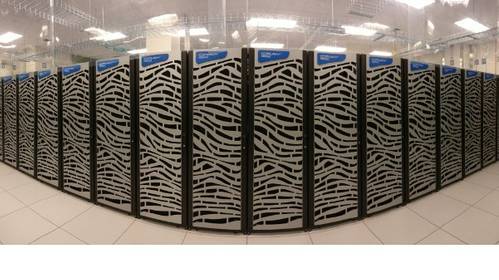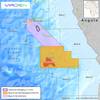$100 Million Boost for NOAA’s High-Performance Computing: Introducing Rhea

The new NOAA high-performance computer, Rhea, will join NOAA’s HPC Hera which is currently operating at the NOAA Environmental Security Computing Center in Fairmont, West Virginia. Rhea, named for the Greek Goddess and mother of gods, will be installed in a modular computer data center at NESCC. Photo credit: NOAA
The Department of Commerce and NOAA have announced a major upgrade to NOAA's computing capabilities with a $100 million grant from the Bipartisan Infrastructure Law and Inflation Reduction Act. This funding will be used to acquire Rhea, NOAA’s latest high-performance computer (HPC) system, enhancing research across weather, climate, ocean, and ecosystem prediction.
What is Rhea?
Rhea represents a significant leap in computing power for NOAA. This cutting-edge system will be installed in a new modular facility at the NOAA Environmental Security Computing Center (NESCC) in Fairmont, West Virginia. NESCC is already home to the Hera HPC, and Rhea’s addition marks a substantial upgrade in NOAA's research infrastructure.
Impact of Rhea on NOAA’s Research
“The Rhea high-performance computer system adds needed computing capacity for NOAA to expand critical research that supports the nation’s climate resilience,” said Assistant Secretary of Commerce Michael C. Morgan, Ph.D. “The new system will strengthen NOAA’s exploration and application of artificial intelligence and machine learning (AI/ML) capabilities, which will ultimately improve weather, ocean and climate forecasting, ecosystem modeling and the use of satellite Earth observations to understand climate changes.”
Rhea will be equipped with advanced graphics processing units (GPUs) designed to accelerate NOAA’s AI and machine learning capabilities. This includes monitoring marine life, forecasting weather, and modeling environmental phenomena like atmospheric rivers, fire weather, and hurricane intensification. Additionally, Rhea will support the development of weather and climate models to refine predictions for droughts, floods, and wildfires.
A Vision for Future Expansion
The $100 million federal funding will support the creation of a modular data center that will house Rhea, along with storage, networking equipment, and switches. This innovative setup at NESCC will facilitate future expansions, allowing for additional modular data centers to be added, further enhancing NOAA’s HPC capabilities for both federal and private sector partners.
Once operational, Rhea will join NOAA’s existing Research and Development High-Performance Computing System, which includes four other HPC centers located in Boulder, Colorado; Princeton, New Jersey; Oak Ridge, Tennessee; and Starkville, Mississippi. The addition of Rhea will increase NOAA’s R&D HPC capacity to approximately 43 petaflops, with another system at NESCC pushing the total to around 48 petaflops. A petaflop represents one thousand trillion operations per second, reflecting the immense computing power of these systems.
Economic and Scientific Benefits
NOAA Chief Information Officer and Director of High Performance Computing Zachary Goldstein emphasized the broader benefits of this investment.
“This investment in high-performance computing will result in significant scientific and economic impacts,” Goldstein said. “The computer’s installation at the NOAA Environmental Security Computing Center in West Virginia will strengthen NOAA’s partnership with the West Virginia High Technology Foundation, which is committed to building a stronger, more diverse economy for the region.”
Enhancing NOAA’s Capabilities
NOAA’s Research and Development High-Performance Computing System has been instrumental in improving weather forecasting and climate projections, including extending warning times for hurricanes, tornadoes, and tsunamis. HPC technology has also enhanced understanding of ocean dynamics and climate impacts while supporting private sector research and economic decision-making.
With Rhea, NOAA is poised to make even greater strides in understanding and addressing environmental challenges, leveraging state-of-the-art computing to drive scientific discovery and innovation.













 December 2025
December 2025



